.
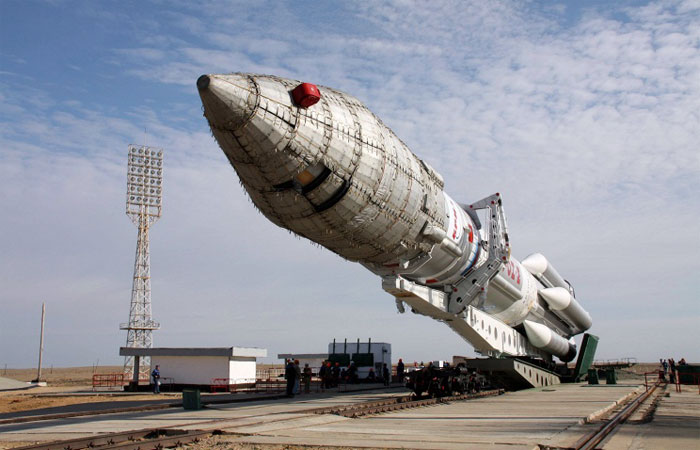
Launch of Russian Proton carrier rocket with British satellite set for January 30
The Proton carrier rocket and the Briz-M upper stage have been developed and are manufactured by the Khrunichev State Research and Production Space Center
-
The launch of a Russian Proton-M carrier rocket with British communications satellite Inmarsat-5F2 has been scheduled for January 30 from the Baikonur space center that Russia leases from Kazakhstan, Russian Federal Space Agency Roscosmos told TASS Monday.
“The Inmarsat-5F2 spacecraft was delivered to Baikonur on December 18. Specialists of the Boeing manufacturer company’s space programs unit immediately started preparing and checking it in the integration and test building,” Roscosmos said.
The Proton carrier rocket and the Briz-M upper stage have been developed and are manufactured by the Khrunichev State Research and Production Space Center. The modernized Proton-M, fitted out with the Briz-M upper stage, is capable of putting into geostationary transfer orbit payloads weighing more than 6 metric tons.
The Inmarsat-5F2 is the second of three Inmarsat satellites of the fifth generation. It is designed to provide communications services in North and South Americas, as well as in the Atlantic region. The first of these satellites was successfully launched with the help of a Proton-M carrier rocket in December 2013.
Quelle: TASS
.
Update: 16.01.2015
.
Launch of Proton rocket with British Inmarsat-5 F2 satellite atop scheduled for January 30
Russian booster Proton-M with the British satellite Inmarsat-5 F2 atop is due to lift off from the Baikonur launching pad in Kazakhstan on January 30.
The rocket will put the communications satellite in super-synchronous transfer orbit at an altitude of 65,000 kilometers, the US company International Launch Services in charge of commercial launches by the Proton launch vehicles said on Thursday.
Separation of the Inmarsat-5 F2 satellite is scheduled to take place 15 hours 31 minutes after the lift-off.
Inmarsat-5 F2 is the second out of three satellites of the fifth generation produced to provide communications services for North and South Americas and the Atlantic region.
The first space module was successfully launched on the Proton rocket in December 2013.
Quelle: TASS
-
Update: 29.01.2015
.
British Satellite to Be Launched by Russian Proton-M Carrier Rocket
A Proton-M carrier rocket and a British telecommunications satellite, Inmarsat 5F-2, have been delivered to the Baikonur cosmodrome in Kazakhstan ahead of the February 1 launch, Russia’s space agency Roscosmos announced on its website Thursday.
The launch, slated for 15:31 Moscow time on Sunday, will be the first in this year’s program. The contract to orbit the Inmarsat 5F2 was inked by the Russian-American International Launch Services Company ISL.
The Inmarsat-5F2, developed by Boeing Satellite Systems on a commission from Britain’s satellite communications operator Inmarsat, is the second of three 5th generation Inmarsat satellites. It is designed to provide communications services in North and South America, as well as in the Atlantic region.
The first of these satellites was successfully launched by a Proton-M carrier rocket in December 2013.
The Proton rocket is due to put the British satellite in a super-synchronous transfer orbit at an altitude of 65,000 kilometers.
The launch had earlier been postponed from January 30 to February 1 upon the customer's request, due to technical reasons linked to pre-launch preparations of the spacecraft.
-
Update: 1.02.2015
-
Proton to fly Russia's first space mission of 2015
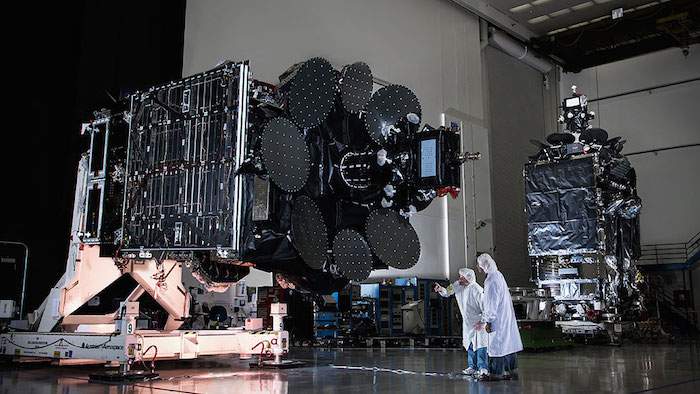
Above: Inmarsat-5 satellites during the assembly. Image credit: Boeing
-
A Russian workhorse rocket will open the nation's space activities this year with the launch of a commercial communications satellite for a London-based operator on Sunday. The liftoff of the Proton-M booster is scheduled for 12:31:00 UTC (7:31 a.m. EST) from Baikonur Cosmodrome in Kazakhstan. The 58-metre vehicle will carry the six-ton Inmarsat-5 F2 satellite, the size of a double-decker bus, designed to provide high-speed broadband voice and data communications across the American continent and the Atlantic region. The first Inmarsat-5 satellite in the planned three-bird constellation was successfully launched on Proton in December 2013. The fourth satellite could be added to the network after 2016. The trio of Inmarsat-5 satellites was built in California by Boeing on the orders from Inmarsat plc headquartered in London. The company was founded in 1979 by the International Maritime Organization (IMO), part of the United Nations, with a goal of providing communications at sea on a non-profit basis. However Inmarsat eventually expanded to global communications and went private. Like most communications satellites, the Inmarsat-5 family is designed to operate in the geostationary orbit 36,000 km over the equator, where spacecraft appear "hanging" in the sky to a ground observer, because its 24-hour orbital period exactly matches the Earth's rotation about its axis. However, Inmarsat-5s' path to their destination is rather unusual. During its 15-hour, 31-minute climb, Proton's Briz-M space tug will push the spacecraft as far as 65,000 km away from Earth, or nearly twice above its prescribed altitude. Counter-intuitively, the exotic launch scenario will actually save the spacecraft some gas for its own thrusters, which will be needed to place it into the operational orbit and keep it there during the satellite's projected 15-year lifespan. In a step-by-step effort to improve the reliability of the Proton, the rocket for the Inmarsat-5 F2 mission was equipped with new angular velocity sensors, which tell the vehicle's computer brain its exact orientation in flight. New sensors replaced infamous PV-301 units, whose wrong installation in the upside down position led to a spectacular crash of a Proton in July 2013, just seconds after liftoff. With the launch of Inmarsat-5 F2, Proton opens a very busy flight manifest for the Russian space program, which includes at least 10 more missions for the nation's heaviest operational rocket in 2015, including the launch of the third spacecraft in the Inmarsat-5 series scheduled for the middle of the year.
Quelle: SEN
-
Update: 2.02.2015
.
Proton launches Inmarsat-5 F2
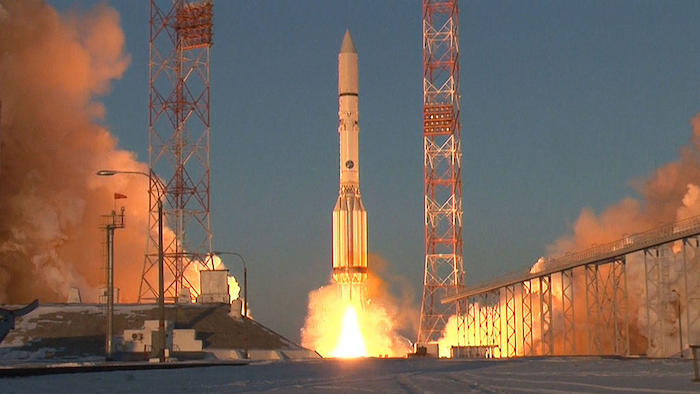
Russia's workhorse rocket opened the nation's space activities this year with a rare daylight blastoff from the frozen steppes of Kazakhstan Sunday. A Proton-M rocket lifted off as scheduled at 12:31:00 UTC (15:31 Moscow Time, 7:31 a.m. EST) from Site 200 in Baikonur Cosmodrome. Under its payload fairing, the vehicle carried a six-ton Inmarsat-5 F2 satellite for its namesake company based in London. The giant spacecraft built by Boeing in California will be used to provide high-speed broadband voice and data communications across the American continent and the Atlantic region. The first Inmarsat-5 satellite in the planned three-bird constellation was successfully launched by a Proton rocket in December 2013. The fourth satellite could be added to the network after 2016. Like most communications satellites, the Inmarsat-5 family is designed to operate in the geostationary orbit 36,000 km over the equator, where spacecraft appear "hanging" in the sky to a ground observer, because its 24-hour orbital period exactly matches the Earth's rotation about its axis. However, Inmarsat-5 took a very long, though pre-planned, detour on his way to this popular destination in space. During its 15-hour, 31-minute climb, Proton's Briz-M space tug pushed the spacecraft as far as 65,000 km away from Earth, or nearly twice above its prescribed altitude. Counter-intuitively, the exotic launch scenario actually saved the spacecraft some gas for its own thrusters, which will be needed to place it into the operational orbit and keep it there during the satellite's projected 15-year lifespan. The mass savings became possible because farther away from Earth the satellite faced less resistance from our planet's gravitational field during an energy-hungry maneuver aimed to tilt its orbit to match the Equator. As an added benefit for the spectators on the ground, the extended flight itinerary shifted the liftoff time for the Inmarsat-5 F2 into the daylight hours in Baikonur. (Most routine Proton missions to the geostationary orbit have to take off in the depth of night, in order to catch the sunlight during prolonged phases of the ascent.) Moreover, the winter weather started clearing shortly before launch allowing the setting Sun to provide a dramatic backdrop as the Proton was thundering into the sky. The launch of Inmarsat-5 F2 is only a beginning in a very busy flight manifest for the Russian space program, which includes at least 10 more missions for the nation's heaviest operational rocket in 2015, including the launch of the third spacecraft in the Inmarsat-5 series scheduled for the middle of the year. In a step-by-step effort to improve the reliability of the Proton, the rocket for the Inmarsat-5 F2 mission was equipped with new angular velocity sensors, which tell the vehicle's computer brain its exact orientation in flight. New sensors replaced infamous PV-301 units, whose wrong installation in the upside down position led to a spectacular crash of a Proton in July 2013, just seconds after liftoff.
Quelle: SEN
-
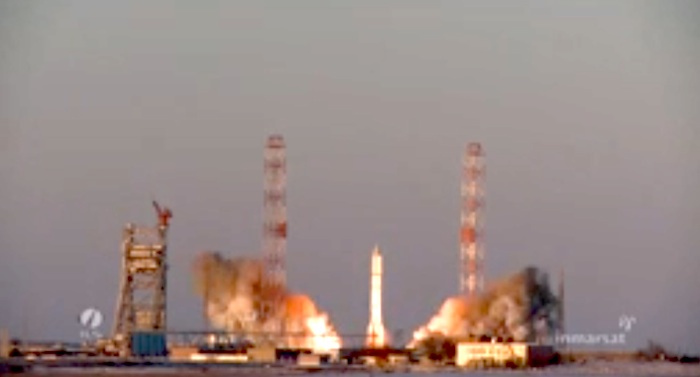


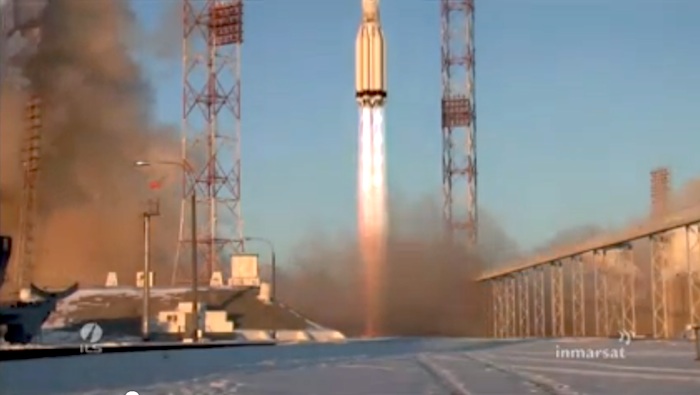
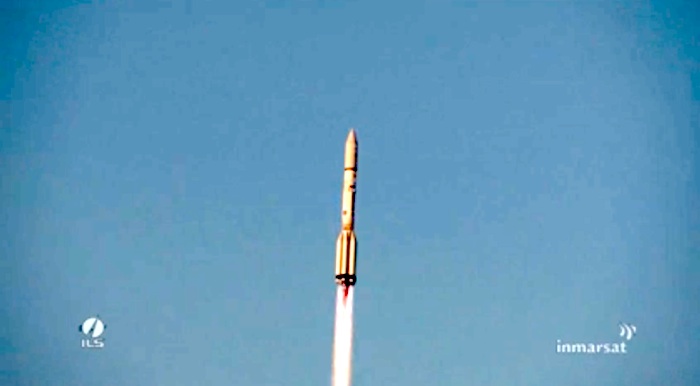
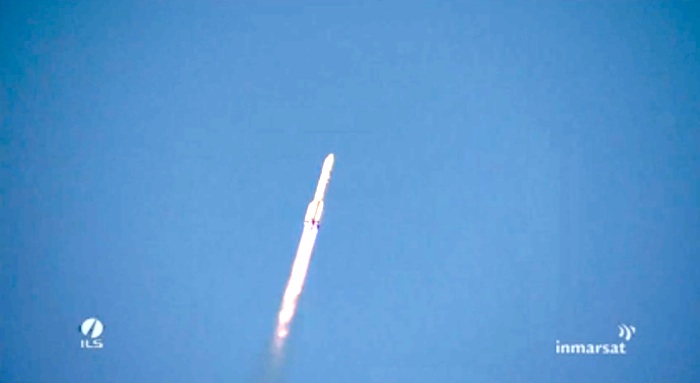
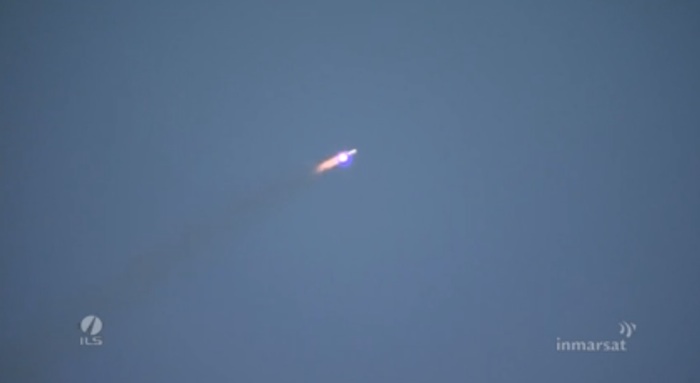



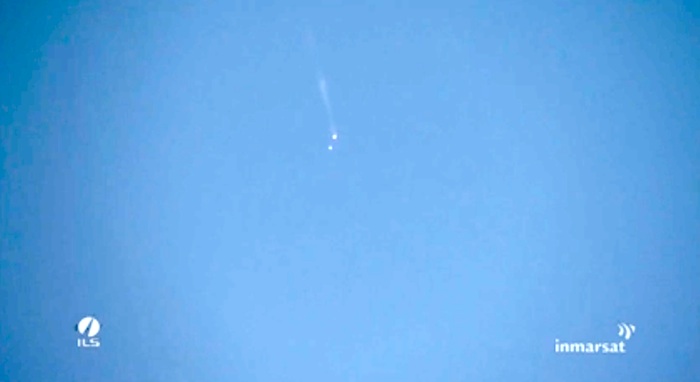
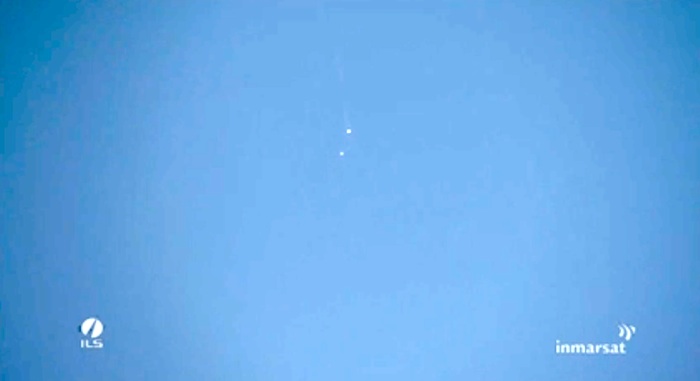
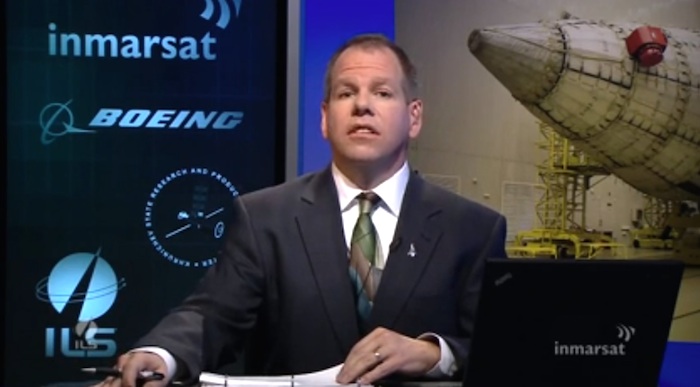
Quelle: ILS
4742 Views
